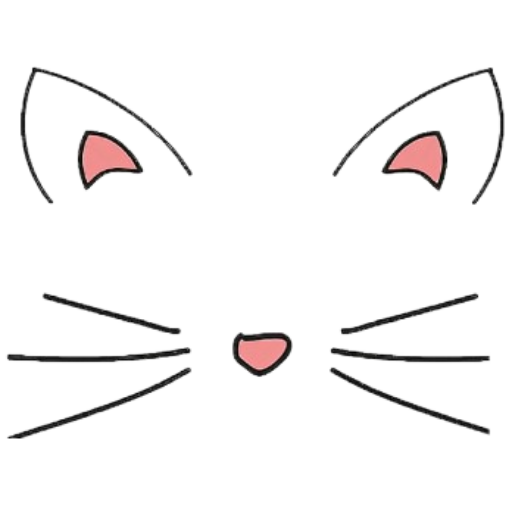The Feline Guardians of Health: Cats and Their Influence on Wellness Practices
- No Comments
In the ever-expanding world of wellness, where the pursuit of physical and mental health is more emphasized than ever, a surprising group of influencers is quietly making its mark: cats. These endearing creatures, long cherished for their companionship, are now being recognized for their significant contributions to our overall health and well-being. From ancient traditions to modern scientific studies, cats have been intertwined with human health practices in ways that are only now being fully appreciated.
Historically, cats have been revered as symbols of health and vitality. In ancient Egypt, the goddess Bastet, often depicted with the head of a lioness or domestic cat, was associated with home, fertility, and protection from disease. The Egyptians believed that cats carried a divine energy that contributed to the health of those around them. This reverence for feline wellness guardianship can be seen across cultures and epochs, from Norse mythology to Asian traditions, each attributing mystical healing properties to these enigmatic animals.
In contemporary times, the health benefits of having a cat extend beyond folklore. A growing body of research highlights the positive impact that cats have on human health. Studies have shown that cat owners typically experience lower stress levels, reduced blood pressure, and a decreased risk of heart attack and stroke. The gentle vibrations produced by a cat’s purr, typically in the range of 20-140 Hz, have been found to be medically therapeutic, aiding in the healing of bones, tendons, and muscles.
Cats also play a vital role in mental health therapy. They are increasingly employed in animal-assisted interventions, where they help individuals cope with mental health challenges such as depression, anxiety, and PTSD. The mere presence of a cat can provide comfort and emotional support, helping to alleviate feelings of loneliness and isolation. The act of petting a cat can release oxytocin, a hormone associated with bonding and stress relief, creating a calming effect that enhances emotional resilience.
Moreover, the routine care of a cat can foster a sense of purpose and responsibility, which is particularly beneficial for individuals recovering from mental health crises. The daily rituals of feeding, grooming, and playing with a cat establish a structure that promotes stability and routine, essential components in the journey to recovery.
The influence of cats in wellness practices is not limited to their companionship. They are also becoming a central feature in wellness spaces, such as yoga studios and meditation centers, where their presence enhances the calming atmosphere and promotes mindfulness. Cat yoga classes, where participants practice alongside freely roaming cats, have gained popularity, blending exercise with the soothing influence of feline company.
As we continue to explore and expand our understanding of wellness, the role of cats in these practices reveals itself to be both profound and multifaceted. Their historical significance, coupled with modern scientific validation, underscores the importance of these silent guardians in our pursuit of health. By acknowledging and embracing the healing power of cats, we open ourselves to a holistic approach to wellness that honors the intrinsic connection between humans and these remarkable creatures. As we navigate the complexities of modern life, perhaps we can all learn from the tranquil presence and serene wisdom that our feline friends bring into our lives.

In the ever-expanding world of wellness, where the pursuit of physical and mental health is more emphasized than ever, a surprising group of influencers is quietly making its mark: cats. These endearing creatures, long cherished for their companionship, are now being recognized for their significant contributions to our overall health and well-being. From ancient traditions to modern scientific studies, cats have been intertwined with human health practices in ways that are only now being fully appreciated.
Historically, cats have been revered as symbols of health and vitality. In ancient Egypt, the goddess Bastet, often depicted with the head of a lioness or domestic cat, was associated with home, fertility, and protection from disease. The Egyptians believed that cats carried a divine energy that contributed to the health of those around them. This reverence for feline wellness guardianship can be seen across cultures and epochs, from Norse mythology to Asian traditions, each attributing mystical healing properties to these enigmatic animals.
In contemporary times, the health benefits of having a cat extend beyond folklore. A growing body of research highlights the positive impact that cats have on human health. Studies have shown that cat owners typically experience lower stress levels, reduced blood pressure, and a decreased risk of heart attack and stroke. The gentle vibrations produced by a cat’s purr, typically in the range of 20-140 Hz, have been found to be medically therapeutic, aiding in the healing of bones, tendons, and muscles.
Cats also play a vital role in mental health therapy. They are increasingly employed in animal-assisted interventions, where they help individuals cope with mental health challenges such as depression, anxiety, and PTSD. The mere presence of a cat can provide comfort and emotional support, helping to alleviate feelings of loneliness and isolation. The act of petting a cat can release oxytocin, a hormone associated with bonding and stress relief, creating a calming effect that enhances emotional resilience.
Moreover, the routine care of a cat can foster a sense of purpose and responsibility, which is particularly beneficial for individuals recovering from mental health crises. The daily rituals of feeding, grooming, and playing with a cat establish a structure that promotes stability and routine, essential components in the journey to recovery.
The influence of cats in wellness practices is not limited to their companionship. They are also becoming a central feature in wellness spaces, such as yoga studios and meditation centers, where their presence enhances the calming atmosphere and promotes mindfulness. Cat yoga classes, where participants practice alongside freely roaming cats, have gained popularity, blending exercise with the soothing influence of feline company.
As we continue to explore and expand our understanding of wellness, the role of cats in these practices reveals itself to be both profound and multifaceted. Their historical significance, coupled with modern scientific validation, underscores the importance of these silent guardians in our pursuit of health. By acknowledging and embracing the healing power of cats, we open ourselves to a holistic approach to wellness that honors the intrinsic connection between humans and these remarkable creatures. As we navigate the complexities of modern life, perhaps we can all learn from the tranquil presence and serene wisdom that our feline friends bring into our lives.


